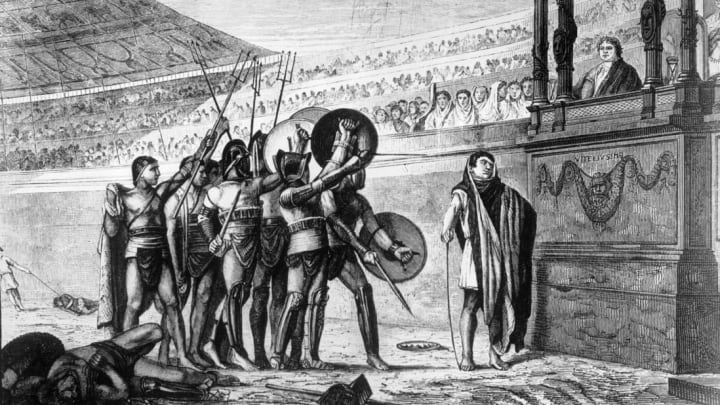Gladiators Drank Ancient, Ashy Nutritional Drinks
By Matt Soniak

While today’s pro athletes might have their own nutritionists and pantries full of different foods and supplements, ancient Rome’s gladiators had to get through long days of hacking and slashing at each other with a very basic, no-frills diet. Their spare meals, heavy on barley and beans, led contemporary writers to nickname them hordearii, or “barley eaters.” According to new research, though, some gladiators may have supplemented that menu with an early take on the post-workout recovery shake, one with a strange secret ingredient.
In the early 1990s, archaeologists excavated a gladiator cemetery in Ephesus, a city in modern-day Turkey that was once a Roman provincial capital. To reconstruct the diets of the people buried there, researchers from Switzerland and Austria recently examined the bones of 22 gladiators from the cemetery and 31 “ordinary” Romans buried around the same time at other sites in the city, and compared their levels and ratios of different carbon, sulphur, and nitrogen isotopes, which can give clues about plant and animal protein intake.
Both the gladiators and the regular Joes appear to have had similar diets. The isotope analysis revealed that both groups relied on wheat and barley as staple foods, didn’t eat much meat or dairy, and instead got their protein from legumes like beans and lentils and, despite Ephesus’ proximity to the Aegean Sea, barely consumed any seafood.
The researchers also looked at traces of other elements in the bones, and this is where the gladiators stood apart from the ordinary Ephesians. The fighters had levels of strontium and calcium that were about twice as high as any of the other individuals, and couldn’t be explained by the foods the two groups had in common. The gladiators, the researchers think, may have been supplementing their diet with a strontium-rich source of calcium that they couldn’t suss out from the isotopes they looked at.
That mystery source, they suggest, could be a drink that Roman texts sometimes mentioned, a mixture of water, vinegar and ash from burned wood. “In his Naturalis historia, Pliny the Elder describes a beverage made of stove ashes that played a role in the life of gladiators,” the researchers say in their paper. “This ash beverage was served after fights and maybe also after training to remedy body pain.”
It sounds gross (though to be fair, a lot of health foods do), but it seems to work well enough that the Romans aren’t the only ones who’ve tried it. The Hopi also have several traditional foods that incorporate “culinary ash” that provides minerals and nutrients. And it may not have been as nasty as it first appears. With some quality vinegar, the drink might not have tasted too far off from a tangy, refreshing lemonade, lead author Fabian Kanz told Livescience.